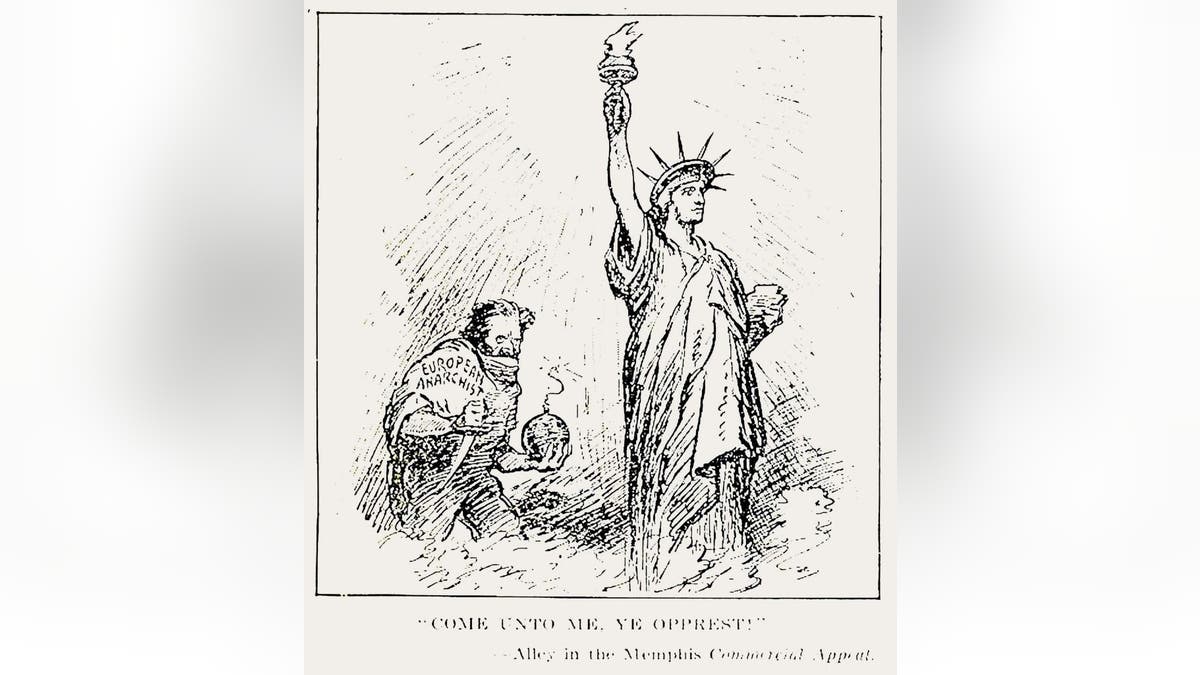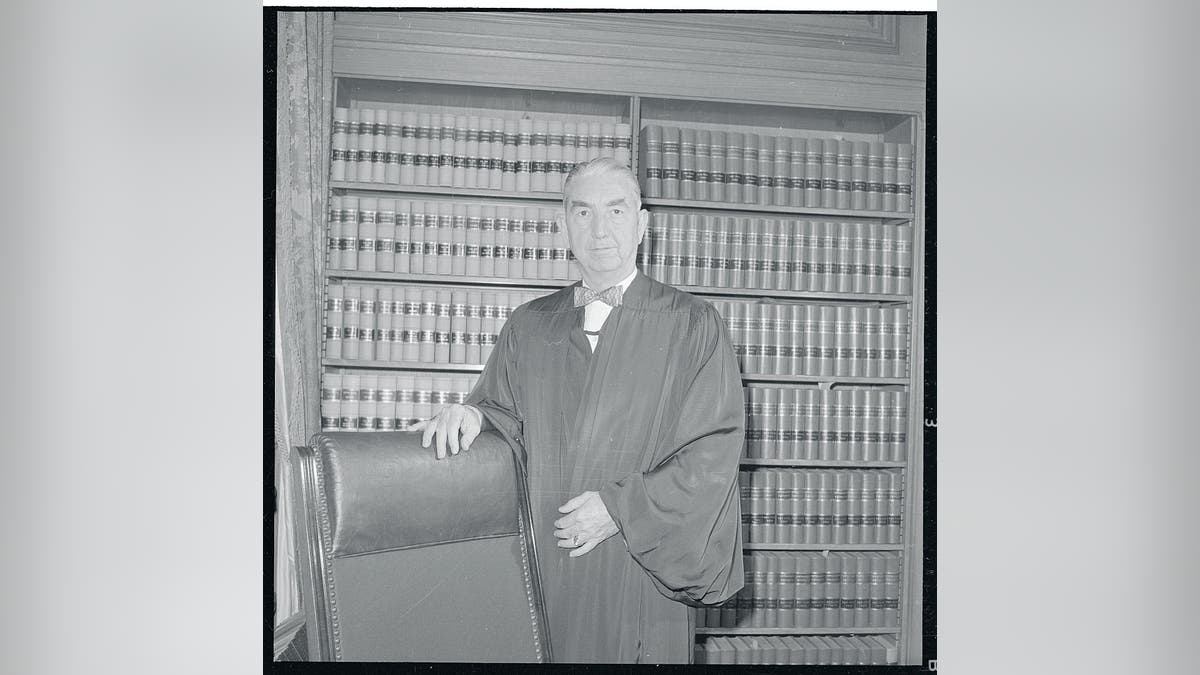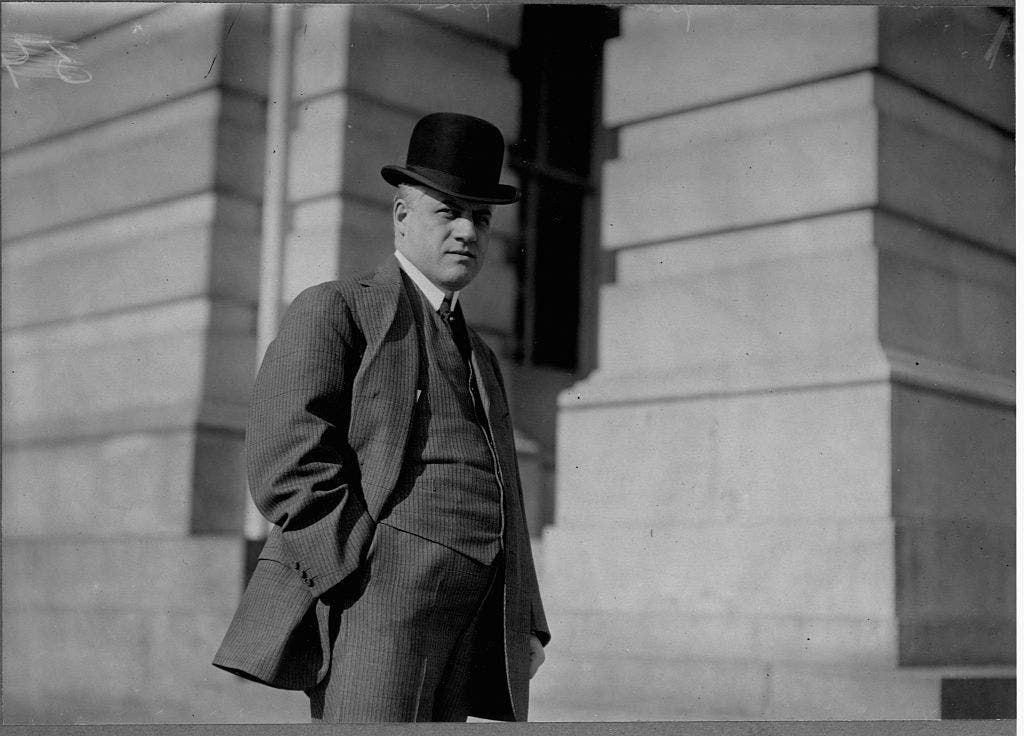The Department of Justice unleashed a shocking and often violent unconstitutional nationwide raid, arresting up to 10,000 people, on this day in history, January 2, 1920.
Attorney General A. Mitchell Palmer, appointed to the position ten months earlier by President Woodrow Wilson, led the raid on suspected communists and anarchists, as well as their sympathizers.
The action was soon called the Palmer Raids.
ON THIS DAY IN HISTORY, JAN. DECEMBER 1, 1953 COUNTRY MUSIC LEGEND HANK WILLIAMS DIES
“The raids constituted a horrible and shameful episode in American history, one of the lowest moments for liberty since King George III quartered troops in private homes,” writes the Foundation for Economic Education.
The foundation called President Wilson’s effort “America’s reign of terror.”
Attorney General Alexander Mitchell Palmer launched a series of unconstitutional raids on January 2, 1920, arresting up to 10,000 people suspected of being communists or anarchists. (Library of Congress/Corbis/VCG via Getty Images)
The Wilson administration also took aim at its political opponents.
“Even a simple criticism of the government was enough to send you to jail,” according to Christopher Finan, author of the 2007 book “From the Palmer Raids to the Patriot Act: A History of the Fight for Free Speech in America.”
“Even a simple criticism of the government was enough to send you to jail.”
The Palmer raids marked the height of the country’s first Red Scare, a response to the Bolshevik Revolution and the communist takeover of Russia.
Radical ideology soon spread across Europe and the United States after the tectonic social upheaval caused by World War I.
The era of fear was further fueled by widespread postwar labor unrest and the deadly 1919 flu pandemic, which killed about 675,000 Americans, many of them children, in just a year and a half.
“The Constitution faced a major test on this day in 1920 when raids ordered by Attorney General Mitchell Palmer saw thousands of people detained without a warrant simply on general suspicion,” the National Constitution Center wrote last year.
“Facilitated by a young Justice Department official, J. Edgar Hoover, what became known as the Palmer Raids reached their peak on the night of January 2, 1920, when between 3,000 and 10,000 people were arrested in 35 cities.” .

J. Edgar Hoover, director of the Federal Bureau of Investigation, seated at his desk in the Department of Justice in Washington, DC, in 1928. Hoover played a key role in the Palmer raids; He was appointed director of the FBI in 1924. (Getty Images)
Many media outlets applauded the raids.
“There is no time to waste in discussions about the violation of liberties,” The Washington Post wrote on January 4.
Alexander Mitchell Palmer was a Democratic congressman from Pennsylvania when Wilson tapped him to head the Justice Department.
“There is no time to waste in discussions about the violation of freedoms.” —The Washington Post, January 4, 1920
The Wilson administration called the new attorney general “young, militant, progressive and courageous.”
The Justice Department was accused of recklessly employing warrantless searches, illegal wiretaps, and aggressive interrogation techniques that today could be considered torture.
Palmer may have been motivated by personal vendetta.
“On June 2, 1919, a militant anarchist named Carlo Valdinoci blew up the front of the home of newly appointed Attorney General A. Mitchell Palmer in Washington, D.C., and himself in the process when the bomb exploded too soon,” reports the FBI in your online office history.

Anti-Bolshevik political cartoon published in the Literary Digest, July 5, 1919. (Photo 12/Universal Images Group via Getty Images)
“Young Franklin and Eleanor Roosevelt, who lived across the street, were also shocked by the explosion. The bombing was just one of a series of coordinated attacks that day against judges, politicians, law enforcement officials and others in eight cities throughout the country.
Palmer was also motivated by personal ambition.
MEET THE AMERICAN WHO SAVED THE CHAMPAGNE INDUSTRY: MISSOURI SCIENTIST CHARLES VALENTINE RILEY
He launched his raids while launching a White House bid.
He lost the Democratic nomination to James M. Cox at the party convention in July.
His “reign of terror” and his White House ambitions simultaneously lost steam.
The Palmer raids were considered “anarchic and subversive of constitutional liberty for both citizens and foreigners.”
“On April 30, 1920, Palmer warned of assassination attempts against ‘more than two dozen’ government officials the next day. But on May Day, nothing happened and Palmer lost momentum as a presidential candidate,” according to the Center National of the Constitution. .
He left office when Warren G. Harding became president in March 1921.
The Palmer raids were deemed “anarchic and subversive of constitutional liberty for both citizens and aliens” during a Senate judicial hearing in February 1921.

(Original caption) Supreme Court Justice Tom C. Clark of Texas, shown in a 1964 file photograph. He issued his infamous “hit list,” officially known as the Attorney General’s List of Subversive Organizations. (Getty Images)
The unconstitutional nature of the Palmer raids was revived during the administration of Franklin Delano Roosevelt in 1938 with the creation of the House Un-American Activities Committee, under the chairmanship of Texas Democrat Martin Dies.
A new Red Scare consumed the government after World War II and the start of the Cold War with the Soviet Union.
CLICK HERE TO SUBSCRIBE TO OUR LIFESTYLE NEWSLETTER
The Truman administration and HUAC would be accused of many of the same unconstitutional tactics as the Palmer raids.
“It originated with President Truman’s Executive Order 9835 of March 21, 1947, which required all federal civil service employees to be tested for ‘loyalty,'” wrote Robert Justin Goldstein for the Archives’ Prologue magazine. Nationals in 2006.
“All employees of the federal public administration [had to] be scrutinized for ‘loyalty.'”
Attorney General Tom C. Clark published his infamous “hit list” the following December, officially known as the Attorney General’s List of Subversive Organizations.
The highly publicized list, Goldstein notes, “tarnishes freedom of association and expression in the United States.”
CLICK HERE TO GET THE FOX NEWS APP
“The Palmer raids were certainly not a bright spot for the young office,” according to the FBI department’s online history.
“But he did gain valuable experience in terrorism investigations and intelligence work and learned important lessons about the need to protect civil liberties and constitutional rights.”
For more lifestyle articles, visit www.foxnews.com/lifestyle.












